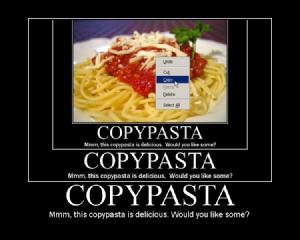Blog
Copy Pasta
12 July 2014
Something is amiss in the universe. There appears to be an enormous deficit of ultraviolet light in the cosmic budget.
Or, so I’m told. I was asked by a few readers about a new study showing there is less light in the universe than expected. They heard of this from various articles showing up on the web. Like this one on Phys Org, or this one from the University of Colorado Boulder, or the original press release from the Carnegie Institute for Science. That single phrase appears on more than 4,000 pages according to Google. Mostly copied from the original press release, and most of them making no reference to the actual research article.
In researching the work, I also learned “It’s as if you’re in a big, brightly lit room, but you look around and see only a few 40-watt lightbulbs” as one of the authors was quoted. That quote shows up on nearly 400 websites, including Popular Mechanics, IFLScience, Forbes Magazine and The Daily Mail. Over and over, the same tweaked variations of the press release. Copy pasta after copy pasta.
 knowyourmeme
knowyourmemeI realize this is how much of science journalism is done. Websites are funded by page views, and for that you need lots of content. Press releases are an easy source of content, and can be used either outright, or tweaked to fit your needs. Unfortunately press releases are designed to put the work in the best possible light, and often over state the impact of the research. Those who have been following me also know this can lead to lots and lots of misconceptions.
Honestly, any website that is interested in actually communicating science can do better. Several do. Any website that thinks otherwise should talk to me or any other scientist who writes about their research field. There’s no need to resort to copy pasta journalism.
By the way, the actual journal article is cited below.1 It is behind a paywall, but you can read the arxiv version here. I’ll probably write about it in the near future, but not today.
Kollmeier, Juna A., et al. “The photon underproduction crisis.” The Astrophysical Journal Letters 789.2 (2014): L32. ↩︎